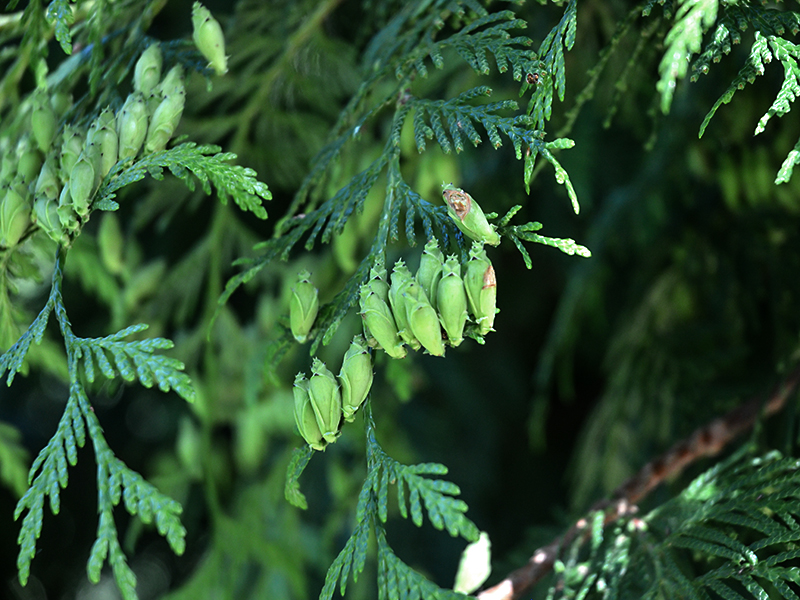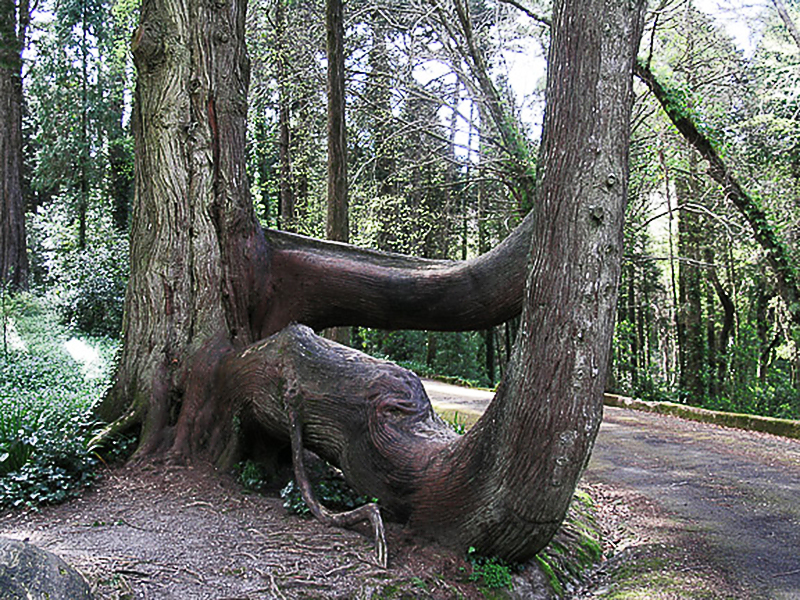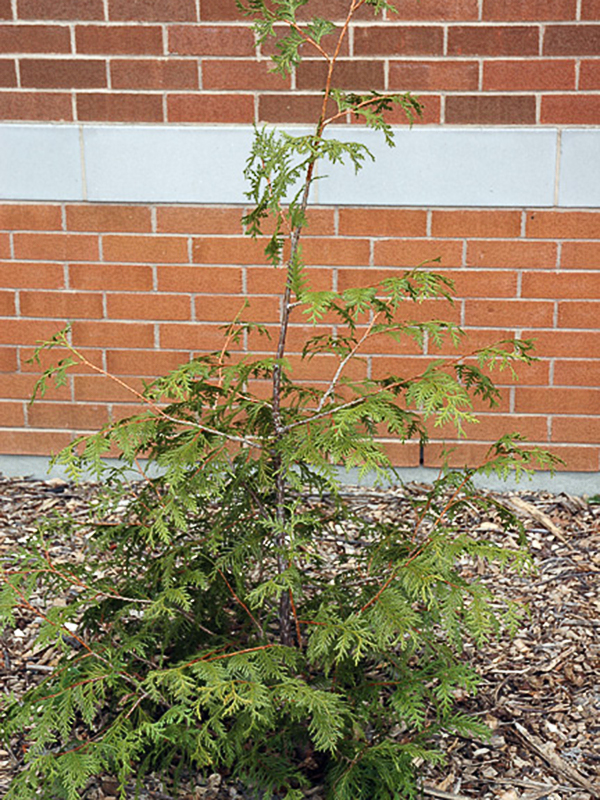
Woody > Thuja > Thuja plicata > Thuja plicata
Thuja plicata
Western Red Cedar
Origin: Native to Western North America. Used extensively by the Natives of western North America for everything from crafts to totem poles to canoes. The wood is prized for its resistance to rot. It is the provincial tree of British Columbia.
Mike's
Opinion


"
A class plant that seems to be rarely grown in our own region for what reason I am not sure other than to say few people know about it.
Michael Pascoe, NDP., ODH., CLT., MSc. (Plant Conservation)
"
| Family |
| Cupressaceae |
| Genus |
| Thuja |
| Species |
| plicata |
| Category |
| Woody |
| Type |
| Tree (evergreen) |
| Pronunciation |
| USDA Hardiness Zone |
| 5 - 7 |
| Canadian Hardiness Zone |
| 4a - 6b |
| RHS Hardiness Zone |
| H6 - H7 |
| Temperature (°C) |
| -29 - (-12) |
| Temperature (°F) |
| -20 - 10 |
| Height |
| 15 - 22 m |
| Spread |
| 5 - 8 m |
Photographs
Description and Growing Information
Flowering Period
| General Description |
| A very large, narrow pyramidal tree in form that will normally keep its lower branches. It is an imposing evergreen tree with value both in its growth rate and form and in its harvest value for timber. |
| Landscape |
| Most often used for hedges in formal and semi-formal plantings, groupings, windbreaks and screens. |
| Cultivation |
| Prefers moist, well drained soils, likes high levels of humidity and full sun to partial shade. |
| Shape |
| A narrow pyramidal tree in form that will normally keep its lower branches. |
| Growth |
| Fast |
| ID Characteristic |
| Similar leaves to T. occidentalis, but the individual divisions are not as wide and the foliage is darker green. |
| Pests |
| Bagworm and heart rot. |
| Bark/Stem Description |
| Red on young stems, grey to reddish brown on old trunks, very fibrous and easily peeled. |
| Leaf Description |
| Leaves are scale-like, with 4 ranks arranged oppositely, each leaf is 1-6 mm long. Similar leaves to T. occidentalis, but the individual divisions are not as wide and the foliage is darker green. |
| Flower Description |
| Small, difficult to see, with the female having a pinkish colour and the male a yellowish colour. |
| Fruit Description |
| Small erect cones about 1 cm long, green colour in the summer, turning brown in the autumn. |
| Colour Description |
| Lustrous dark green. |
| Texture Description |
| Medium. |
| Notable Specimens |
| The Niagara Parks Botanical Gardens, Niagara Falls, Ontario, Canada. Westonbirt, The National Arboretum, Tetbury, Gloucestershire, England. |
| Propagation |
| Stratification in moist medium at 0 - 5°C for 30 - 60 days. Can also be rooted from winter cuttings. |


